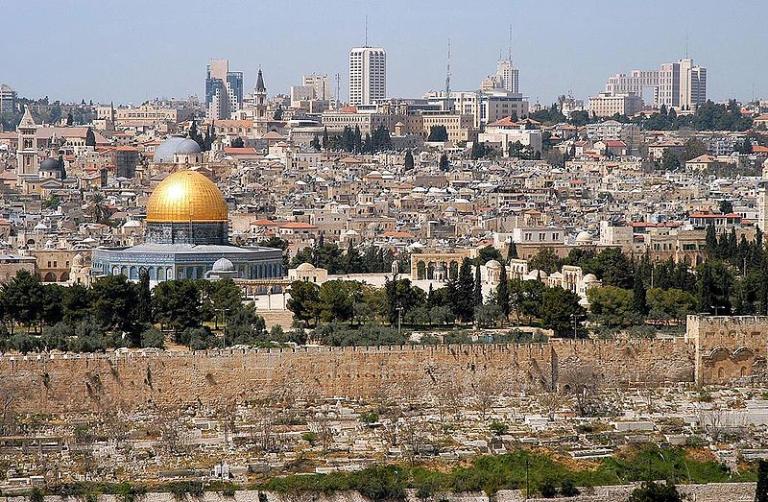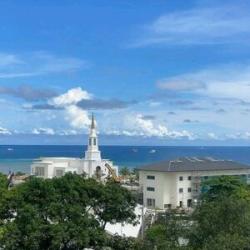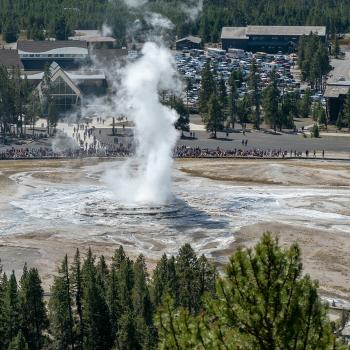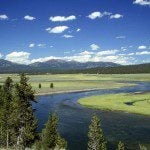
(Wikimedia Commons)
Another day, another passage:
However, while the missionary efforts of the Church in the Near East were winding down or entirely absent, its presence in the Holy Land actually began to grow in the late 1960s and early 1970s. A study group from Brigham Young University first came to Israel in the winter and spring of 1968. David B. Galbraith, a Canadian Latter- day Saint, arrived in Israel in 1969 with his Dutch-born wife, Frieda, in order to pursue a doctorate at the Hebrew University of Jerusalem. In February 1972, the first of what would be a regular series of BYU study groups arrived, and the growth of an LDS presence in Israel began perceptibly to accelerate. Already by April of 1972, hopes for a memorial to Orson Hyde and for a Latter-day Saint visitors’ center were under discussion among ambitious members of the Church there. From the beginning, however, an unofficial, non-legal ban on proselyting in Israel was closely observed by the Saints, both residents and visiting students.
In the fall of 1972, President Harold B. Lee, accompanied by Elder Gordon B. Hinckley of the Council of the Twelve and by President Edwin Q. Cannon of the Switzerland Zurich Mission, became the first president of the Church to visit the Holy Land since the days of the first Christian apostles. While there, at a meeting at the Garden Tomb on 20 September 1972, President Lee organized the Jerusalem Branch, calling David B. Galbraith and setting him apart as branch president. John A. Tvedtnes, a graduate student in ancient Near Eastern studies at the Hebrew University, was set apart by Elder Hinckley as first counselor. During this historic visit, the matter of a visitors center and the question of a memorial monument to Orson Hyde were again subjects of conversation. (Jerusalem mayor Teddy Kollek himself had independently suggested an Orson Hyde monument some time before.)
Another upshot of President Lee’s visit to Jerusalem was his eventual approval of the members’ custom, already established there, of holding their church meetings on Saturday, the Jewish sabbath. For many reasons, this seemed the practical thing to do, and President Lee signalled his approval of it by letter after his return to the United States. This was a striking demonstration of the Church’s flexibility, under prophetic leadership and divine authority, in adapting to new situations without compromising on basic principles. The letter also authorized branches in Muslim countries to hold their meetings on Fridays, in keeping with the practices of the societies in which they are located.
Posted from Richmond, Virginia











